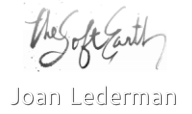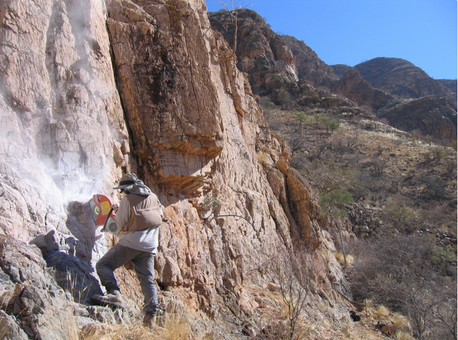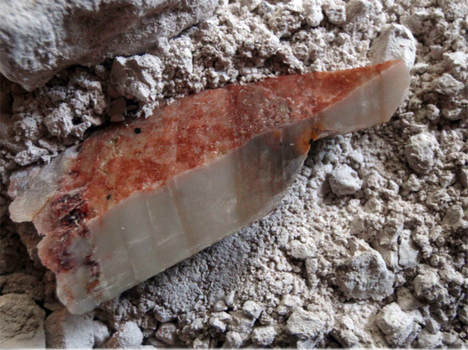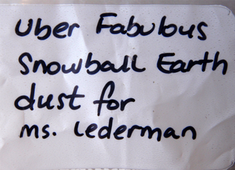Snowball Earth
|
When WHOI scientist Bernhard Peucker-Ehrenbrink brought me this powder made from a ground-up Namibian rock, I didn’t know anything about “Snowball Earth.” The Namibian (Snowball Earth) rocks are mostly from 020°11.970’South, 015°00.987’East at an outcrop valley East of the road from Fransfontein, Namibia, about a kilometer north of the town. Then, when I asked other scientists, there seemed to be skepticism about the science and my web searches brought little. Three years later: it’s better publicized, National Geographic has written about it, and I’ve learned more about using it. |
One jar contained this chunk hidden within the ground-rock powder — note the stripes that show layers of time. Lots to find if you do an Internet search. It’s tricky to use this rock slurry as glaze and the results are varied, depending on if it’s applied to stoneware or porcelain clay. With stoneware, metallic oxides in clay interact with the surface glaze and make golden and gray-green colors unlike on porcelain when the glaze is usually white.



